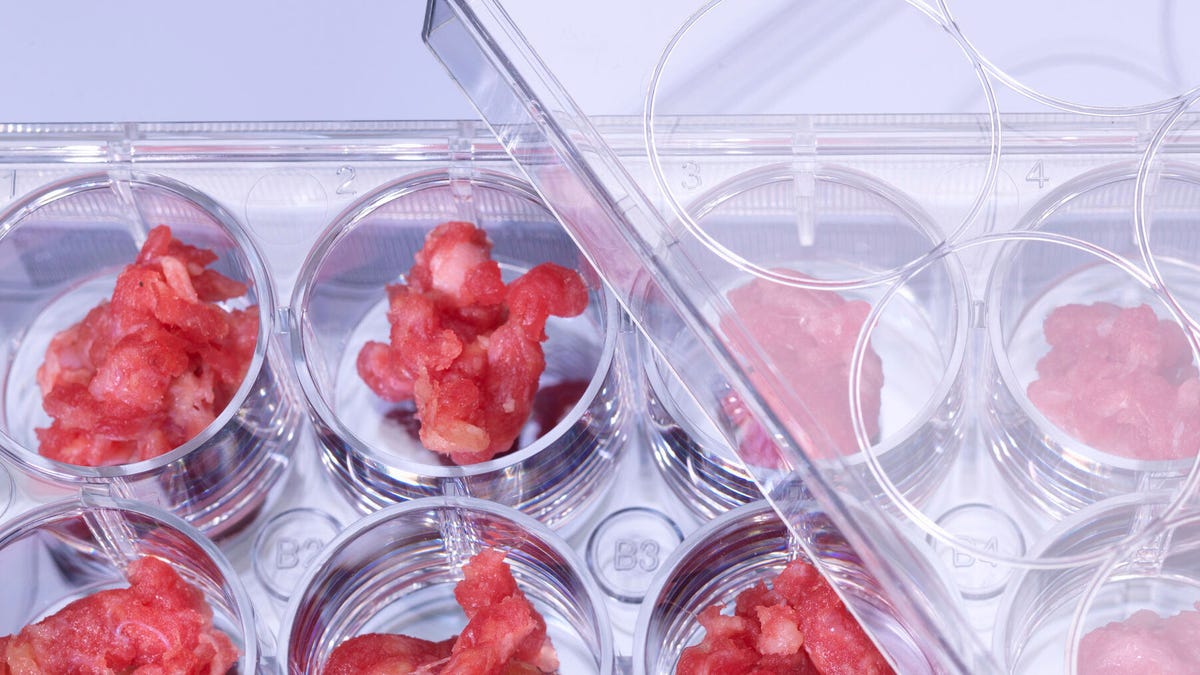Lab-grown meat built on soy scaffold tastes and smells just like beef
Scientists develop a new technique using soy protein to create meat that resembles the real deal.

Scientists are working to grow meat in the lab using soy scaffolds.
Humans are hungry for fake meat. 2019 was pretty big for the faux meat world, with Impossible Foods partnering up with fast food giant Burger King and Beyond Meat unveiling a new burger and going public. The promise of alternative meats is a future where animals aren't farmed to fill our stomachs and while companies like Impossible and Beyond look to plant-based meat substitutes to solve that ethical conundrum, scientists are hard at work growing beef in a lab -- from just a handful of cells.
In a new study, published in the journal Nature Food on Monday, researchers in Israel detail the creation of a 3D scaffold carved out of textured soy protein, an edible byproduct of soybean oil production. Their creation acts like a skeleton for bovine cells to grow around, creating beef-like muscle tissue that when fried or baked -- three volunteers say -- had "a pleasant meaty flavour" and it adequately replicated the texture of a meat bite.
The process of developing the lab-grown meat is markedly different to the one used by Impossible Foods and Beyond Meat. Those meat alternative manufacturers build out their offerings using soy and potato proteins. They've earned plaudits for building a plant-based offering that still tastes like the real thing, even though structurally it doesn't much resemble meat.
Cultured meat is a little different -- it aims to create meat on the molecular level. Scientists believe its possible to coax cells from cows or chickens into becoming particular muscle tissues but to mould them into a physical, 3D-approximation of a cut of meat, you need a scaffold.
That's where the textured soy protein comes in. The edible material is porous, like a sponge, which gives cells space to adhere and grow and it can also be shaped in the lab easily. The research team added a mixture of cow muscle cells known as "satellite cells", and then cultured them with a mixture of factors to stimulate their growth and maturation. Comparing their lab-grown meat with just the soy protein scaffold showed the team had recapitulated some of the physical attributes of real meat.
Cell-based meats are still a long way from mass production and they don't quite have the current scalability that Impossible Foods or Beyond Meat can offer. They're expensive to make and you need a lab to do so. Developing a reliable scaffold which produces the same flavor and enables cheaper, more high-throughput manufacturing will be just the first step in bringing cell-based meats to market.
The next will be getting us to eat it.

